A novelist and a photographer walk into a theater…
Over the three years I’ve been writing The Literate Lens, few events have screamed “blog post!” as loudly at me as the one I attended last night at Symphony Space, in which Sally Mann, the acclaimed photographer (who, by her own admission, rarely leaves her Virginia home), was in conversation with Nashville-based novelist Ann Patchett.
I’ve loved Mann’s work ever since she blazed into the headlines with her 1992 book Immediate Family—I’ve followed her since into some strange and dark territory, and knew, from the essay excerpt published in the New York Times Magazine a few weeks ago, that her new memoir Hold Still would be fascinating. I also loved Ann Patchett’s 2011 novel State of Wonder, which can roughly be described as a sort of contemporary feminist version of Conrad’s Heart of Darkness. A photographer-turned-memoirist in conversation with a novelist—needless to say, it was catnip to my visual-verbal brain.
What I didn’t expect, though, was that the event would be so laugh-out-loud funny. I’m not sure how well Mann and Patchett know each other, but they had a fantastic rapport on stage. From the beginning, there was a sort of Southern hospitality, let’s-not-take-ourselves-too-seriously feel to the evening, with Patchett proving herself a fearless and hilarious interviewer. From outing Mann as a hoarder (“the fact that you still have those six darling little dresses from your childhood—that just seems so weird to me,”) to her teasing dissatisfaction with one of Mann’s answers (“Do better,”) her questioning was zingy and probing in just the right way. I’ve been to so many events where, for one reason or another, an interview has fallen flat—so it was delightful to see one where both participants not only uncovered some golden nuggets but clearly had a great time.
Before I relate some highlights of the evening, though, I want to spend few paragraphs on Mann’s book. I’ve reflected before that only a lucky few people can express themselves well both visually and verbally, and with Hold Still, Mann has proven herself one of them.
Of course, even if she wasn’t a very good writer, many of us would want to read her memoir anyway. Mann has had a fascinating life, partly because of her Southern gothic heritage, and certainly because of her role in the early 1990s as a lightning rod for the culture wars, when her intimate portraits of her children brought out every Puritanical bone in the American body politic.
You could recount this history chronologically, in mundane language, and it would still be interesting. But Mann goes much further. As in her images, the memoir is elegiac and probing, organized around revelatory themes, and full of rich stories that upend our expectations. Take, for example, this passage that opens a section in which Mann uses her relationship with her black nanny to examine the issue of race in the South:
“Down here, you can’t throw a dead cat without hitting an older, well-off white person raised by a black woman, and every damn one of them will earnestly insist that a reciprocal and equal form of love was exchanged between them. This reflects one side of the fundamental paradox of the South: that a white elite, determined to segregate the two races in public, based their stunningly intimate domestic arrangements on an erasure of that segregation in private. Could the feelings exchanged between two individuals so hypocritically divided ever have been honest, untainted by guilt or resentment?”
Bam: way to open a chapter. Though the observation isn’t particularly new (see Kathryn Stockett’s The Help—which I loved despite the backlash), it’s expressed with an appealing, punchy energy, pulsing underneath with confusion and a desire to get under the surface of this complicated territory.
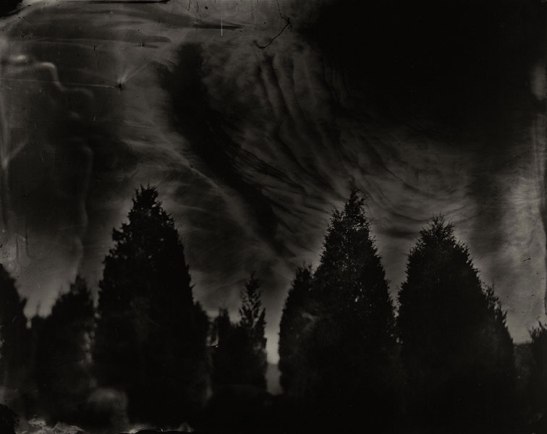
In her series Battlefields, Mann visited Civil War sites looking at history and its aftereffects. Image (c) Sally Mann
That’s one thing. But then, take the line from the Prologue in which Mann describes a photograph as “cut from the continuum of being, a mere sliver, a slight, translucent paring from the fat life of time; elegiac, one-dimensional, immediately assuming the amber quality of nostalgia: an instantaneous memento mori.” That phrase “a slight, translucent paring from the fat life of time” took my breath away when I first read it. I’ve read a lot about photography, and have struggled to put its power into words myself, and there isn’t much verbiage about the medium you can throw at me now that doesn’t seem a bit stale and overused. But Mann’s description was utterly fresh and original. It’s a line that, like her best images, shimmers with an essential truth and just seems incredibly natural, despite all the work that must have gone into making it.
The book makes good use of images, too, using them to both comic and poignant effect. Here’s an example, in a chapter where Mann contrasts her parents’ laissez-faire rearing and her husband Larry’s buttoned-up and repressed youth:
And now to the evening, from which I’ll cherry-pick some highlights. Please excuse me for putting these in a list, but as Mann herself said—riffing on Flaubert—“You should have an ordinary and organized life so that you can be extraordinary and original and outrageous in your creative life.” (Admission: I didn’t know this Flaubert quote, and, as a fiction writer with a very ordinary and organized life, found it enormously comforting.)
 Can you judge a book by its cover? The image on the cover of Hold Still, of a girl in mid-air, perfectly illustrates the beautiful line I quoted above, that a photograph is “a mere sliver, a slight, translucent paring from the fat life of time.” Patchett, who began by asking Mann about the book’s cover, joked, “you always know an interview’s going to be really bad when it starts with the cover. It means the person hasn’t read the book.” However, she did ask, and this is what we learned: the girl is Sally Mann, who was on a trampoline at her brother’s boarding school graduation. It was shot by her father, a keen (and talented) amateur photographer. Some of the clouds were Photoshopped in order to make the image wrap around the book’s spine. (Later, when Mann quoted W. S. Merwin saying that an evanescent moment was “as unrepeatable as a cloud,” Patchett quipped, “You mean the clouds that were Photoshopped on your book cover?”)
Can you judge a book by its cover? The image on the cover of Hold Still, of a girl in mid-air, perfectly illustrates the beautiful line I quoted above, that a photograph is “a mere sliver, a slight, translucent paring from the fat life of time.” Patchett, who began by asking Mann about the book’s cover, joked, “you always know an interview’s going to be really bad when it starts with the cover. It means the person hasn’t read the book.” However, she did ask, and this is what we learned: the girl is Sally Mann, who was on a trampoline at her brother’s boarding school graduation. It was shot by her father, a keen (and talented) amateur photographer. Some of the clouds were Photoshopped in order to make the image wrap around the book’s spine. (Later, when Mann quoted W. S. Merwin saying that an evanescent moment was “as unrepeatable as a cloud,” Patchett quipped, “You mean the clouds that were Photoshopped on your book cover?”)
Success is no guarantor of confidence. That’s right: one of America’s most celebrated living artists regards herself as a borderline imposter. “I pick up the camera and say, I’m going to make a terrible dodo of a picture, until maybe by chance, like a monkey with a typewriter, I’ll make a good one. But otherwise, it’s botch to botch,” Mann said. I was reminded of Franz Kafka’s constant feeling of failure, expressed in his diaries. Later, Mann did admit that, at sixty-four, she’s “beginning to feel the first little tendrils of confidence seeping in a bit.” That tension between self-doubt and confidence is interesting, I think, and crucial to the act of creation. Too much of either could clearly derail a career—but I’m glad Mann is letting up on herself a bit at this stage in her life.
How does photography compare with writing? Mann thinks photography is easier. “So much is given to you as a photographer,” she said—from subjects to light and mood. “As a writer, you have to create the choices you make. I can’t wait to go back to being a photographer!” Patchett, who writes both fiction and nonfiction, said that photography was more analogous with nonfiction in that the subject already exists, whereas in fiction, “you have to make up the trees.” However, she contested the idea that photography was easier than writing, saying, “I couldn’t begin to do what you do,” then deadpanning wistfully, “I do like the idea of going outside, though. That sounds nice.”
Let it go, already—Mann is sick of talking about Immediate Family. Of course, though, that’s what everyone wants her to talk about. She gently ragged on Terri Gross, who’d “asked me the same question in twenty different ways.” (I stand behind no one in my love for Terri Gross, but I have to admit, her interview with Mann was pretty one-note.) “I hadn’t anticipated how much everyone would want to talk about the family pictures, all these years later. It’s just seventy pages in a five hundred page book!” she protested. Patchett, known most for her prize-winning novel Bel Canto, said that feelings toward an iconic work can be complicated: “It’s your enemy but it’s your friend.” However, she sympathized with Mann’s frustration, saying of Bel Canto, “To me, it’s a dead thing. It’s like someone asking you about a boyfriend you had when you were fifteen. It’s gone.”
Great rewards come from hard work. Mann, who decided to write her memoir after being invited to give the prestigious Massey lectures at Harvard, and struggling over writing them, said the only way she could write her book was to “put on the harness every day and plod on like a peasant, seven days a week.” Conversely, she said, with photography there are images she labors over and others that seem to come as a gift from the blue. Patchett wondered if that was an illusion, saying, “For me, it comes really easily on the twenty-first day after I’ve spent twenty days sitting and tearing my hair out.” She also observed that she doesn’t see a big difference between seemingly-inspired and labored-over writing. “A lot of times I go back and look at it, and those lines that came from plodding, obdurate hard work—they’re really good,” she said.
In portraiture, the photographer has a huge amount of control. In the Q&A, Mann was asked how she talks to her sitters and collaborates with them to get a photograph. She said it was a “deeply ethically complex process” and that “it’s no less complex when it’s your family.” She has largely avoided the process since shooting Immediate Family and Proud Flesh, the body of work she has done about her husband Larry’s body changing through muscular dystrophy. Recently, though, she said, she has been taking portraits of black Southern men in a continuing effort to look at race in the South. Her control over the outcome of these portraits is troubling to her. “I talk to people and say, look, I can make you look like an idiot by pressing this button,” she admitted. To temper this, she doesn’t let an image go out into the world without the sitter’s approval. “It’s important to me to let them do that.”
At this point, it would be remiss of me not to mention three novels inspired partly by Mann’s images. In Black & White by Dani Shapiro, the female protagonist is deeply scarred by her history as a model for her mother, a famous and aloof photographer whose images bear a striking resemblance to Mann’s. I found Shapiro’s treatment of her character’s trauma melodramatic (and, as I noted in a review for the San Francisco Chronicle, very different from what Mann’s daughters have expressed). More interesting to me was the Mann-inspired chapter of Whitney Otto’s Eight Girls Taking Pictures, in which Otto is loosely inspired by Mann but transposes her blood-soaked Southern history to the comparative lightness of California. Finally, though the famous photographer in Kathryn Harrison’s Exposure is a man, Harrison probes the ethical issues of portraiture quite effectively, and her character’s trauma seemed more appropriate given the sexual politics of the father-daughter relationship.
So that’s it, except to say that both Mann and Patchett seemed refreshingly unpretentious, down-to-earth, and—as expressed before—unexpectedly funny. If you happen to be in Nashville next Thursday, you can catch a reprise of the Sally and Ann show at Patchett’s wonderful bookstore Parnassus. For everyone else, I hope this post has opened a small window onto a memorable event, and has inspired you to dive into the great work of both Patchett and Mann.
—————————————————
Buy Hold Still here.
Visit Ann Patchett’s Amazon page here.
77 comments on “A novelist and a photographer walk into a theater…”
Leave a Reply
Connecting to %s


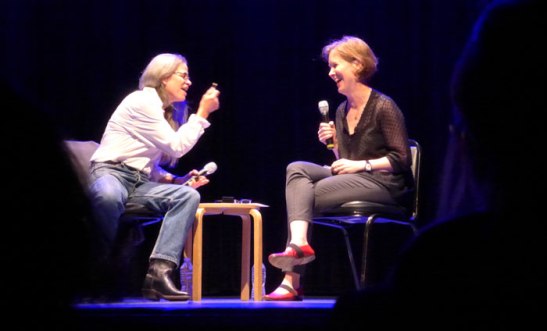
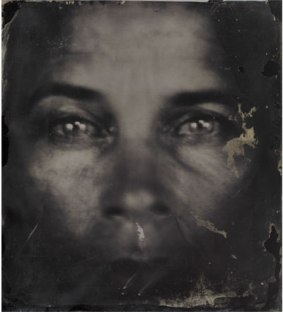
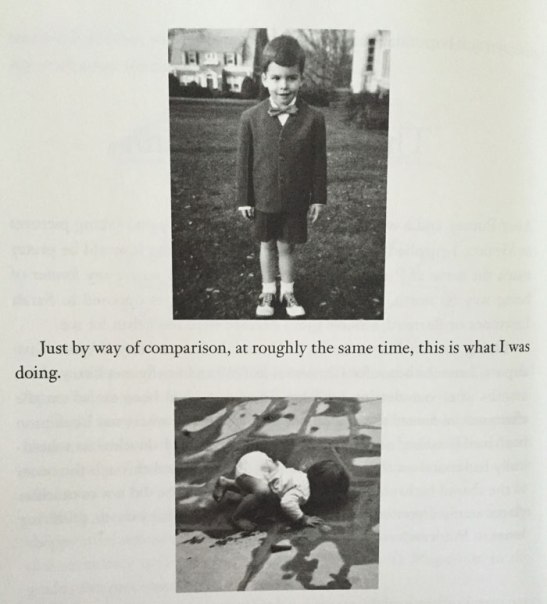
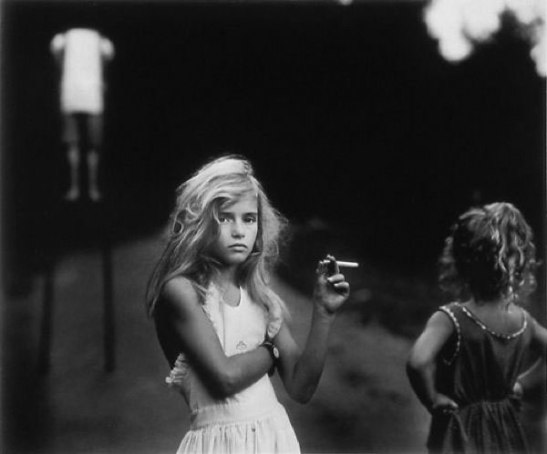
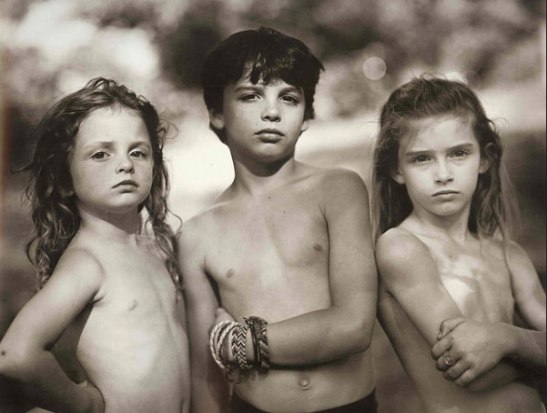
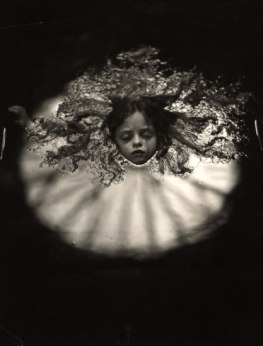

Wonderful. I saw Mann’s NYT piece also, and was blown away by her writing – oh to be so doubly blessed in the talent sphere! Thank you so much for sharing your observations on this event 🙂
You’re welcome! Thanks for reading and taking the time to comment.
Sarah, I wish I could have been there. It sounds like an incredible exchange between Mann and Patchett. Great post!
Thanks, Robin! I was lucky I found out about it 2 days before it happened. It was my last evening in NYC before leaving for my London trip, but I couldn’t pass it up.
Her children have been used.She has invaded their sexual privacy.We shall have to see how her’s kids love and sexual relationships are smooth and easy.I doubt it.privy
Thanks, Albert. I’m not sure how we will be able to judge the qualities of her grown-up kids’ sexual relationships: that seems like their business alone. You may find this article interesting: https://charliesarsfieldcmp.wordpress.com/2010/10/12/would-things-have-been-easier-if-the-photographs-had-never-been-taken-jessie-mann/
I wish I was there, too. Very nice post!
Would have been good to have your company, Paola!
Reblogged this on Sensory .
Thanks for the shout-out, Lia!
Great post,,follow me n reblog this on https://pabrikjakartaa.wordpress.com/
Thanks for sharing – I’ve been an admirer of Mann’s art since I saw the documentary Blood Ties, and I’m glad to get this happenchance update!
Oh, I don’t think I knew about that documentary. Thanks for bringing it to my attention!
It was Oscar nominated as best short doc in, I think, 1994, so it should be relatively easy to get hold of. It was made while the Family Matters controversy was still live.
very interesting article. Thanks for sharing.
Honestly, I didn’t know of either of them. but it has interested me enough to find out more. I’ve been living in a cave it seems. Excellent article.
Thank you opening my mind! Love this!
You’re very welcome!
Reblogged this on M.T. Miles.
Thanks!
Reblogged this on kicdirt.
Thanks kicdirt!
Excellent article, and great to learn something new.
Lovely article
Reblogged this on Writing is Art.
Great, thanks!
I’ve seen and enjoyed Mann’s photographs in the past. Now I’ve read this I want to go out and buy her book; it sounds brilliant. How fortunate that you get to see her being interviewed! Thanks for this.
Enjoy the book, Paula!
i like, good post 😉
Reblogged this on Watch and Whirl and commented:
Excellent article. I went back to read it for a second time. So many interesting people and not enough to get to know them all!
Thank you sonniq! I’m glad to have introduced you to two great artists. Life is short but art is long!
I totally agree. When people complain about all the time spent on computers – without them, the chance to find out about people and events were almost impossible.
This was a great one!
Thank you, much appreciated.
very wonderfull
https://etempodepauta.wordpress.com/
Reblogged this on nickfounder's Blog.
Thank you Nick!
This sounds like such a fascinating talk! I hadn’t heard of Sally Mann before and haven’t read Ann Patchett’s work, but I always love when two creatives from different fields coming together. The ideas of photography being ‘like nonfiction’ and writing being harder than photography because you have to ‘create everything’ are interesting to me. I’ve always thought of photography as very tricky – ethically complex, as Mann mentioned – because almost by definition you’re showing something that exists, a truth. However, as the photographer (and/or editor) you also have the task of creating the context or story around that truth. In my mind it’s akin to writing historical fiction. Does this ring true for you as a photographer and writer?
PeopleIMetInMyTwenties.com
Thanks for this, lifeofskip–I think it’s a really interesting observation. I’ve never before thought to compare photography to historical fiction, but it’s an intriguing idea. The photographer is shaping the present moment rather than the past, but I think the comparison is spot-on in that photography and historical fiction are both blends of reality and interpretation/storytelling. Fodder for a future blog post, maybe!
Thanks for sharing Sarah! This sounds like a great time. This is a lovely article!
You’re very welcome! Thanks for stopping by.
Reblogged this on mrsmackintosh2901.
Thank you, mrsmackintosh!
Reblogged this on lifeissuch001.
Thank you. I am very gratified by the attention this article has received.
Reblogged this on Screamin' Coly and Fluid😕.
Great, thanks!
A pleasure😁
Very interesting and insightful article. I would love to have seen this interview. It sounds like a peek into the minds and lives of two true artists. I will now want to look for Sally Mann’s memoirs. I am very glad to hear that she gets her subjects’ okay to use their images.
Enjoy the memoir, CJ!
Reblogged this on SCRITTORI E SCRITTURE.
Thank you!
for me is pleasure
Reblogged this on jswins414.
Thanks!
Whereas Ann Patchett sounds slightly frightening to me, she also seems to be formidably fun. I like her.
LOL, inkinsky, I think you’ve articulated exactly how I felt about AP. Maybe she should adopt “slightly frightening but formidably fun” as her tagline.
Reblogged this on Nyafa M..
Thanks!
Reblogged this on brittneythadamsxjm.
Great, thanks!
Reblogged this on Philosofishal and commented:
In service of writer-to-writer, artist-to-artist encouragement, this excerpt in particular inspired my reblogging. It contradicts the notion that daring or interesting life experiences alone fuel good writing, and it reinforces a belief I have held that structure for an artist can be the best home for beauty’s thriving:
“As Mann herself said—riffing on Flaubert—’You should have an ordinary and organized life so that you can be extraordinary and original and outrageous in your creative life.’ (Admission: I didn’t know this Flaubert quote, and, as a fiction writer with a very ordinary and organized life, found it enormously comforting.)”
Thanks, Philosofishal. Thinking about it, I feel that “the notion that daring or interesting life experiences along fuel good writing,” as you eloquently put it, was fostered by certain very macho male writers–Hemingway, Kerouac et. al–and was not a default assumption before, say, the late 19th century. Think of Charlotte Brontë and Jane Austen, who basically sat in their parlors and wrote beautiful fiction. A while ago, in a blog post about Kerouac (http://wp.me/p25Qfq-oK), I cited Joyce Johnson’s Beat Generation memoir ‘Minor Characters,’ in which she talks about being in a class of aspiring female writers at Barnard in the 1950s and having “grey-haired, craggy-faced” Professor X tell them that, “if you were going to be writers, you wouldn’t be enrolled in this class… you’d be hopping freight trains, riding through America.” Somehow, Johnson managed to write a luminous memoir and several novels without doing this.
Reblogged this on L. V. Lewis and commented:
I loved the title of this so much, i had to reblog it!
🙂
I enjoy both aspects of writing and photography. Each tells its own story. Sometimes one is easier then other.
Reblogged this on MY VIETNAM.
Thanks Uy Do!
Great piece! And the focus on “the slice” is lovely. I work a lot with word-photo interaction, and I find it terribly difficult for the two to co-exist without one dominating or limiting the other. Thanks again for a most enjoyable piece-wish I’d heard the talk…..
That’s interesting, bonesnsnow — please post your website URL if you have one.
Sarah- I actually have two sites, http://www.oldbonesnewsnow.com is a photo/poetry blog on WordPress; and http://www.jfinkimages.com which is more of a curated photo site. Still a novice in the blogging arena.
Thanks!
Jeff
me too! it looks like it was a tremendous evening!
Reblogged this on KaXtone's Blog.
Great, thanks for stopping by.
Reblogged this on ArtEdutech.
THUMBS UP!
BRILLIANT piece! it reminded me of an event i shot recently, in St Andrews (Scotland) with Pulitzer Prize winner Paul Muldoon (Irish, now residing in NYC) and 2x Mercury Music Prize winner, PJ Harvey. Both spoke frankly of their work, their aspirations and both did wonderful readings (Mr Muldoon, from his new collection of poetry – if you’re a fan of James Joyce you will enjoy his work & PJ Harvey read some her poetry from her travel/collaboration with Seamus Murphy, and, of course, she also gave a blinding acoustic performance of some of her songs); captivating the audience (myself included – both are my heroes) and promoting their new books. Over dinner, Polly Jean told me of her travels with photographer Seamus Murphy to Afghanistan, Kosovo and Washington DC. If you haven’t seen these books, i thoroughly recommend. ’twas funny, over dinner, i was seated right next to a Pulitzer Prize winning poet (and did i already say he is a hero of mine?) and me… an aspiring writer of poetry and prose and all we talked about was Irn Bru -a rather vile sugary sweet soda drink, hailing from Scotland and how he cannot acquire it in NYC. So while i drank a lovely Malbec, he had his glass of this disgusting drink…. haha! i wrote about it. if interested, you can find it in my archives. they say you should never meet your heroes. i kinda have to disagree…